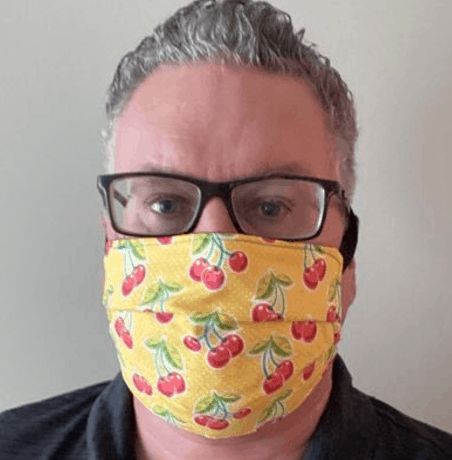Thanks to Emily Elrod for inviting me to do a video chat webinar as part of a series that she has been running recently on “surviving quarantine by spreading life.” It was done on Thursday 5/7 at 4:30 pm ET.
This post contains:
- Our video chat interview
- A separate standalone webinar that I recorded
- Text that explains what I presented on
Click here to view Emily's recording through YouTube.
Here is more about the series:

You can find previous sessions through her YouTube channel.
Here is, alternatively or additionally, a webinar presentation version of this content that takes a deeper dive into some topics that I didn't cover with Emily (because she asked some other great questions about workplaces and more general topics related to this era).
I'm going to focus on “living well” through safety and maybe a bit of courtesy. We might think of some of these practices as “standardized work” — and there are always opportunities to improve (or “kaizen”) what we do.
Content from the Webinar
If you'd rather read than watch or listen, here you go:
There are certain precautions and concerns for those of us living in condos or apartments compared to those who live in a detached home (in an urban, suburban, or rural setting). It's harder to avoid potential virus exposure when we live in denser, shared spaces.
We might see signs like this… at a house, we don't have to think about putting on a mask to walk out to our mailbox at the curb.
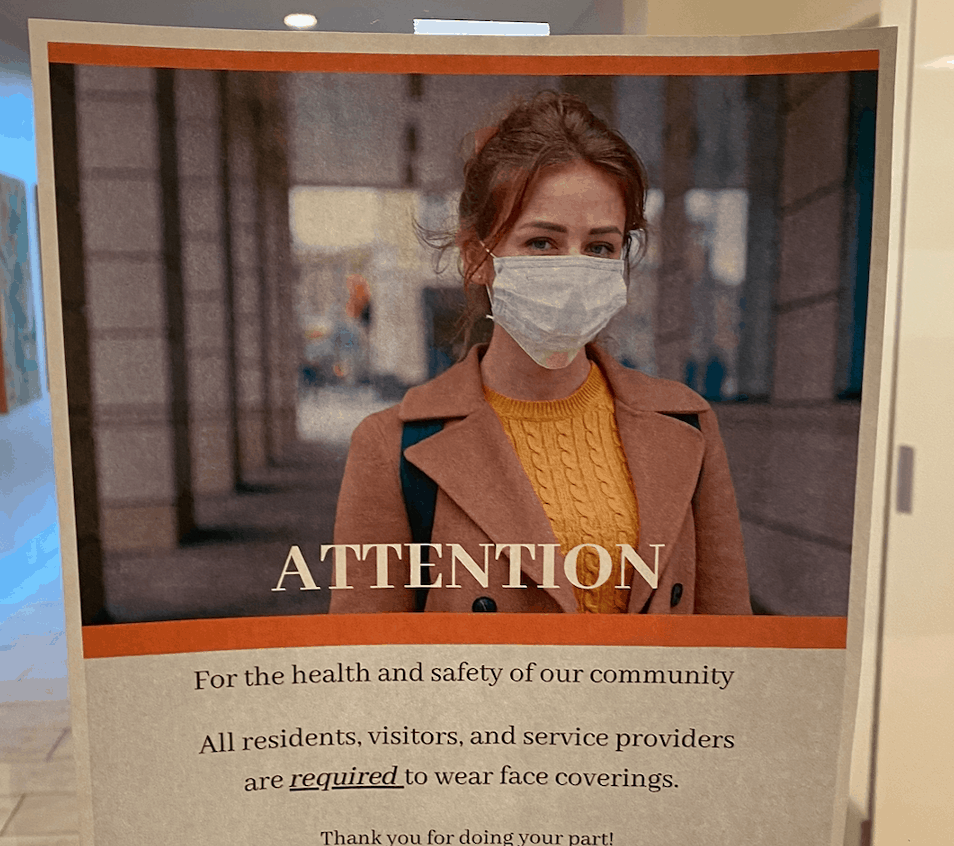
I think it's worth remembering (for all of us in all settings) that we aren't only wearing masks to protect ourselves… it's also to protect others.
Why am I writing about shared living spaces?
Moving From an Apartment to a Condo
I'm “burying the lede” here as they say in journalism. My wife and I had been in a condo in Orlando because of her work the past 3+ years. She recently took a job with a new company (a great career step for her), which means a pandemic relocation. That's right.
We're now in an apartment complex (temporary corporate apartment) in Los Angeles.

We drove over 2500 miles… which led to stories that I might tell in another blog post. What's it like staying in hotels during a pandemic? Why did we drive instead of fly? There were many pros and cons and I'll just leave it at that for now. We made it safetly.
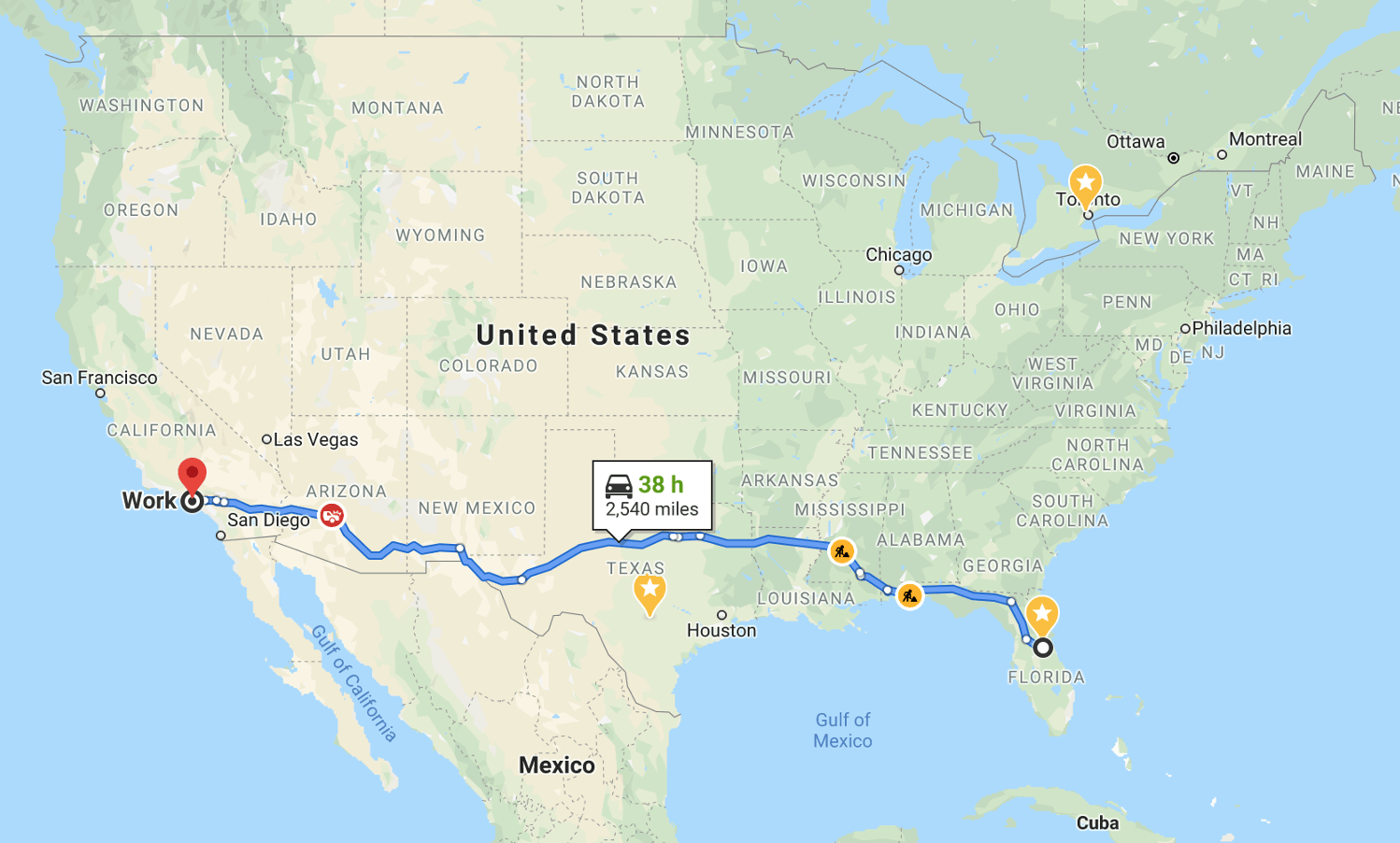
A webinar about “how to relocate during a pandemic” wouldn't attract much of an audience right now.
But, we now have experiences to share from two different high-density living situations.
General Mask Wearing Tips
It might be worth remembering general good practices for wearing masks — applicable if you are going from a house to the store.
- If going to a store or a common area:
- Wash your hands at home
- Soap and hot water for 20 seconds
- Put on your mask at home
- Wear the mask door-to-door
- Leave it on!
- Don't touch or adjust it
- Cover your nose and mouth
- Remove the mask when back home
- Touch only the straps
- Wash your hands again
- Put the mask in the washing machine or a clean place
A key point is to NOT take the mask off while in the car or along the way. You don't need a mask in the car, but every time you touch the mask (or your face in the process), there is risk. This is especially true if you have to interact with elevators or doors along the way.
Don't rock this “around the neck” look:

I'm not sure doctors should be doing that these days, either.
There's a lot of focus on masks (that should cover your mouth AND nose), but don't forget about your eyes. Don't touch them, either. Wearing glasses or sunglasses might serve as a reminder.
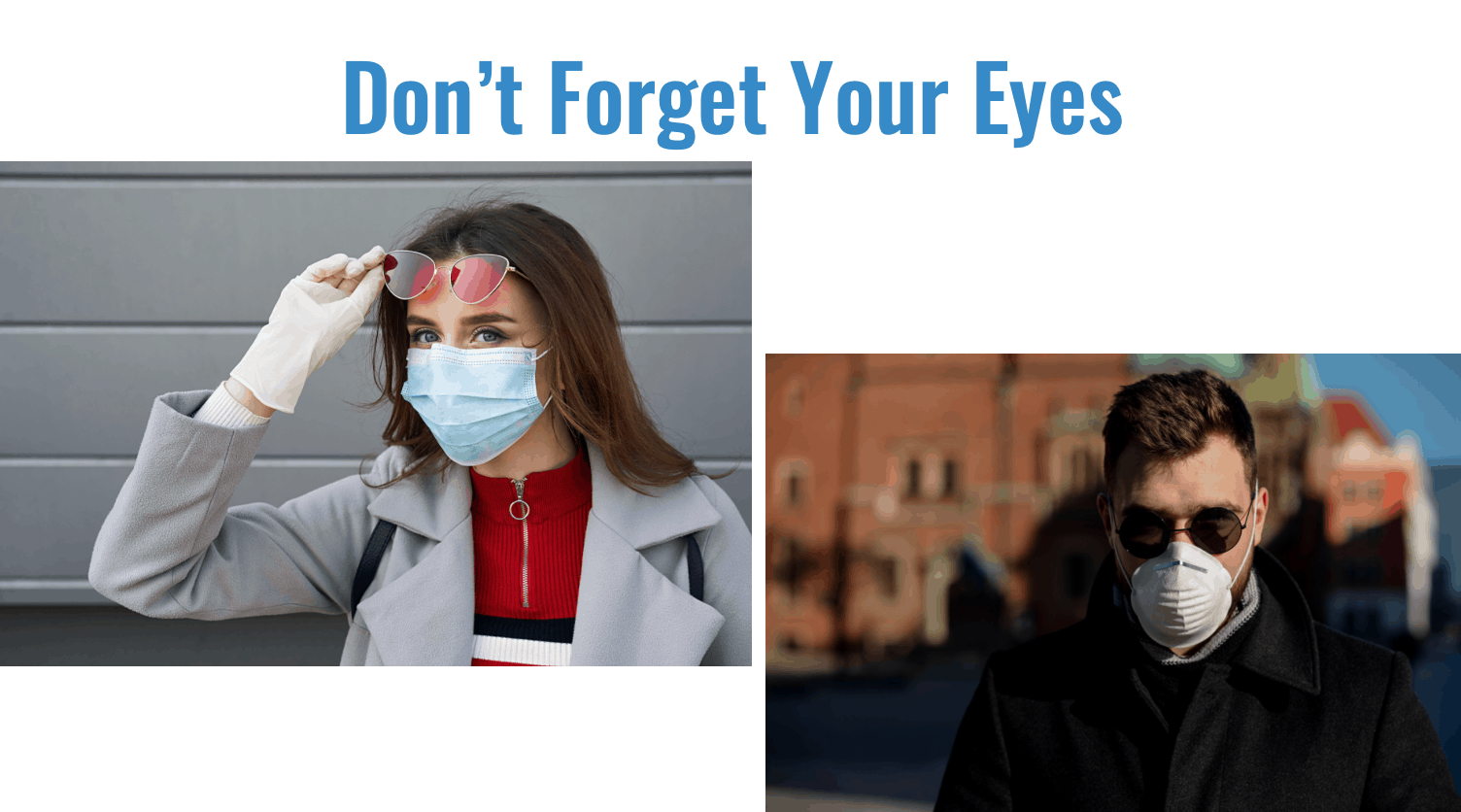
Well Buildings – Air Flow
A lot of what I'm sharing in the webinar comes from a very helpful article that I read in March. We used this to help develop some guidelines at the Orlando condo.
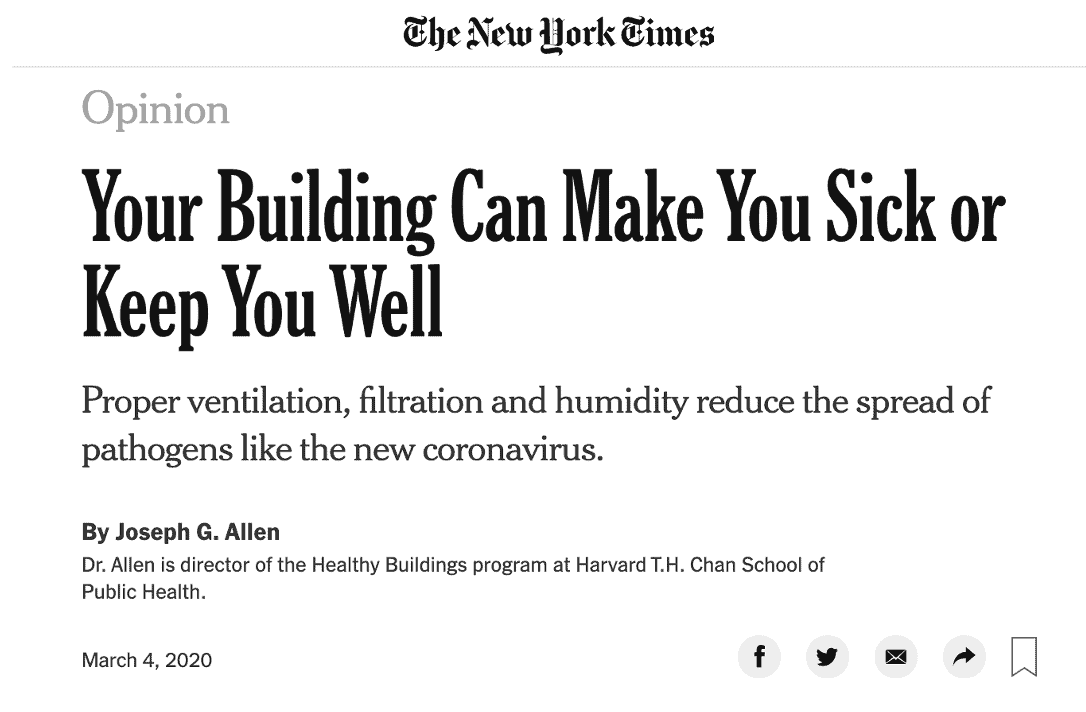
We know the virus spreads through droplets — which is why we don't want to let anyone sneeze or cough on us (or vice versa). We also have to be worried about droplets that land on surfaces that we might touch.
In shared spaces, there is another concern:
“But when people cough or sneeze, they expel not only large droplets but also smaller airborne particles called droplet nuclei, which can stay aloft and be transported around buildings.”
So what can WE do as individuals? Open a window (if that's physically possible):
“…bringing in more outdoor air in buildings with heating and ventilation systems (or opening windows in buildings that don't) helps dilute airborne contaminants, making infection less likely.”
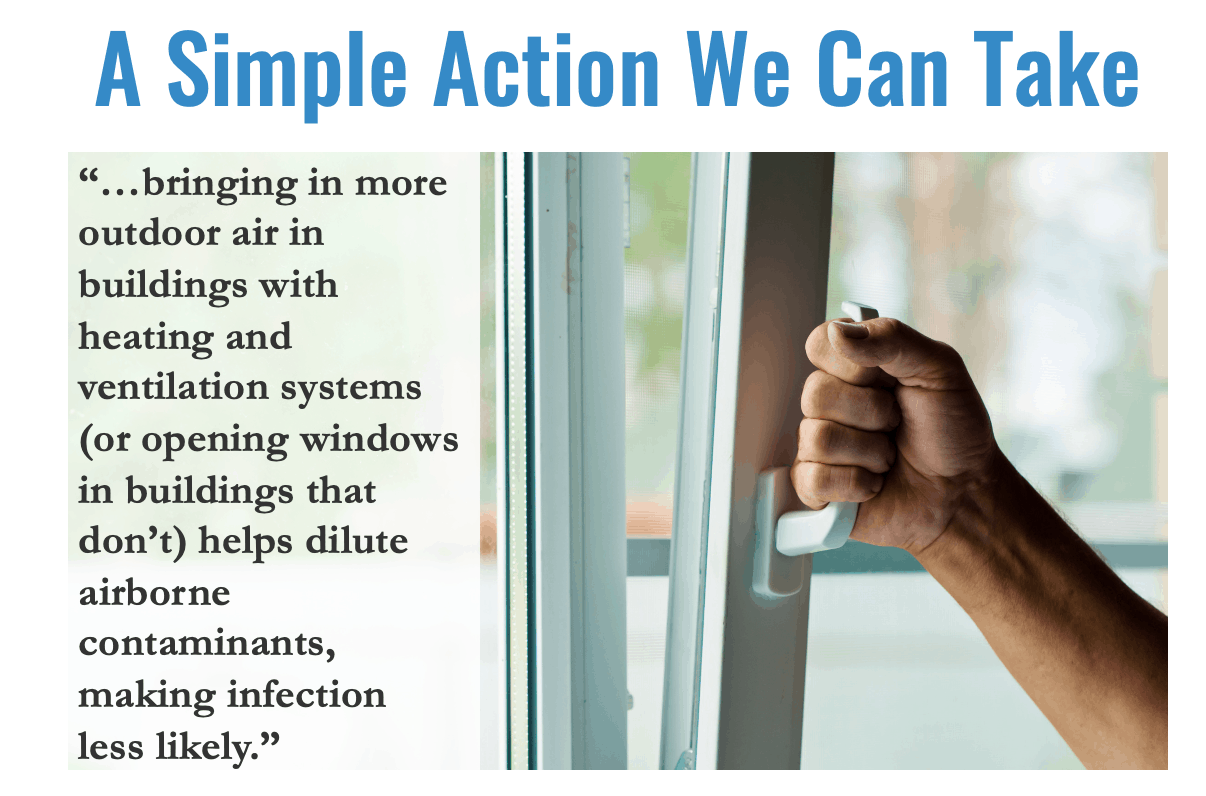
There is some science behind this (read more):
“A study published just last year found that ensuring even minimum levels of outdoor air ventilation reduced influenza transmission as much as having 50 percent to 60 percent of the people in a building vaccinated.”
What can your building or complex potentially do? Better filters can help:
- Replace low-grade air filters with better ones
- MERV rating of 13 or higher
- Can capture 80% of airborne particles
- Portable air purifiers in high-risk areas
- HEPA filters
- Capture 99.97% of particles
You can also use a humidifier, which might help (it can't hurt):
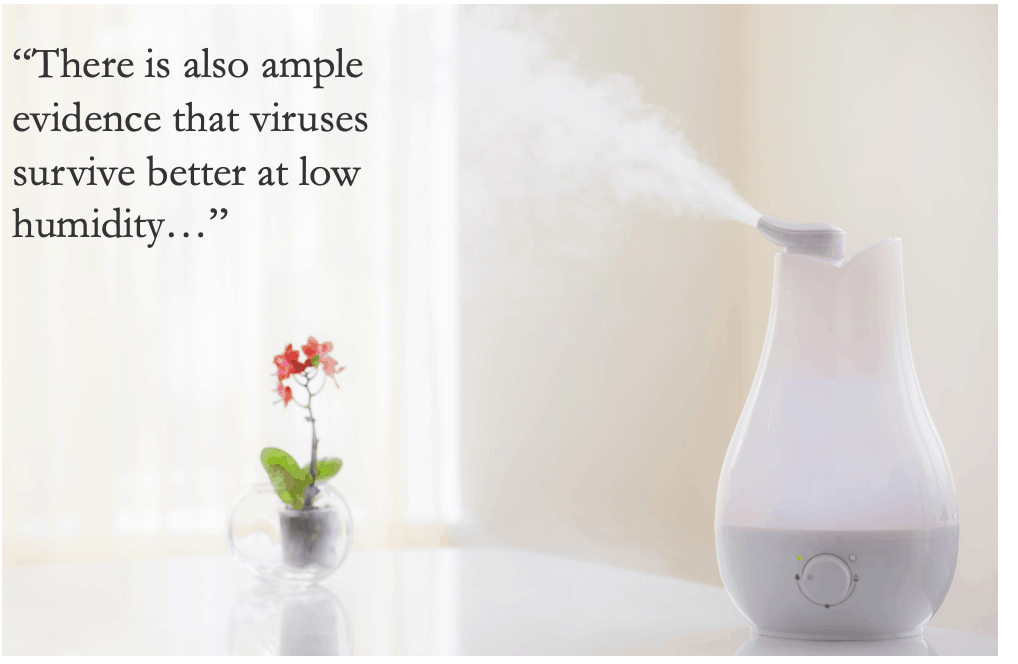
Amenities
Many amenities, like pools and gyms, are closed. This is sometimes a legal requirement. In some cases, apartment management companies or condo boards shut them down because they think it's the right thing to do, or they fear legal liability, or both.
The amenities and common areas are closed at the LA apartment.
Our Orlando board decided to keep amenities open but with certain restrictions, including requiring distancing and limiting the number of people — and banning guests.
The warning sign was pretty ominous:

Personally, I chose to NOT use the gym because I didn't want to wipe everything down constantly and I didn't want to take that risk. I'm enjoying the fresh air that I get from my power walks.
Some of the signs that were posted elsewhere (including in the elevators) about were very wordy and hard to read. This “infographic” style sign that a board member made was much better:
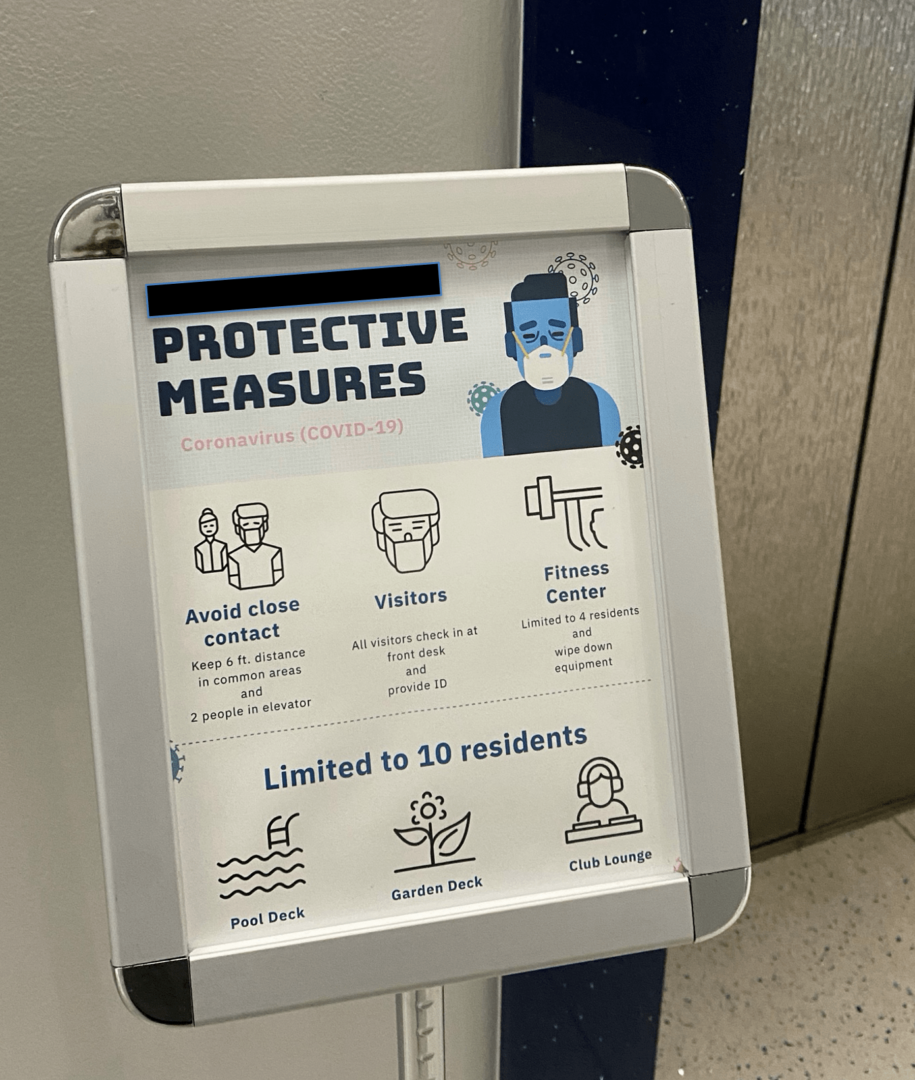
Leaving Home
When leaving home, you might run across surfaces along the way. If you can, take hand sanitizer that you can use along the way. That might not be necessary if you're really disciplined about not touching your face, but it can't hurt.
When you're home and have access to a sink, it's more effective to use soap and hot water (and we might need to conserve our precious sanitizer supply).
In general, when it comes to surfaces, we've heard a lot in the news about studies or tests that show the coronavirus is present on surfaces, but that doesn't mean they will necessarily cause infection.
The virus lives longer on hard, non-porous surfaces like glass, metal, and plastic. There's less to worry about with cloth and cardboard, as the virus lives a shorter time.
When it comes to elevator buttons, there's a really famous “hack” that involves using disposable toothpicks to press buttons:
I tend to use my elbow or my keyfob. There's minor risk that virus might be transferred from a button to my fob. I sometimes spray my keys with Lysol cleaning spray, just in case (it can't hurt).
My wife suggested that I use my shirt to open doors when grabbing a handle is necessary. Or you can use paper towels or a cloth you carry with you perhaps.
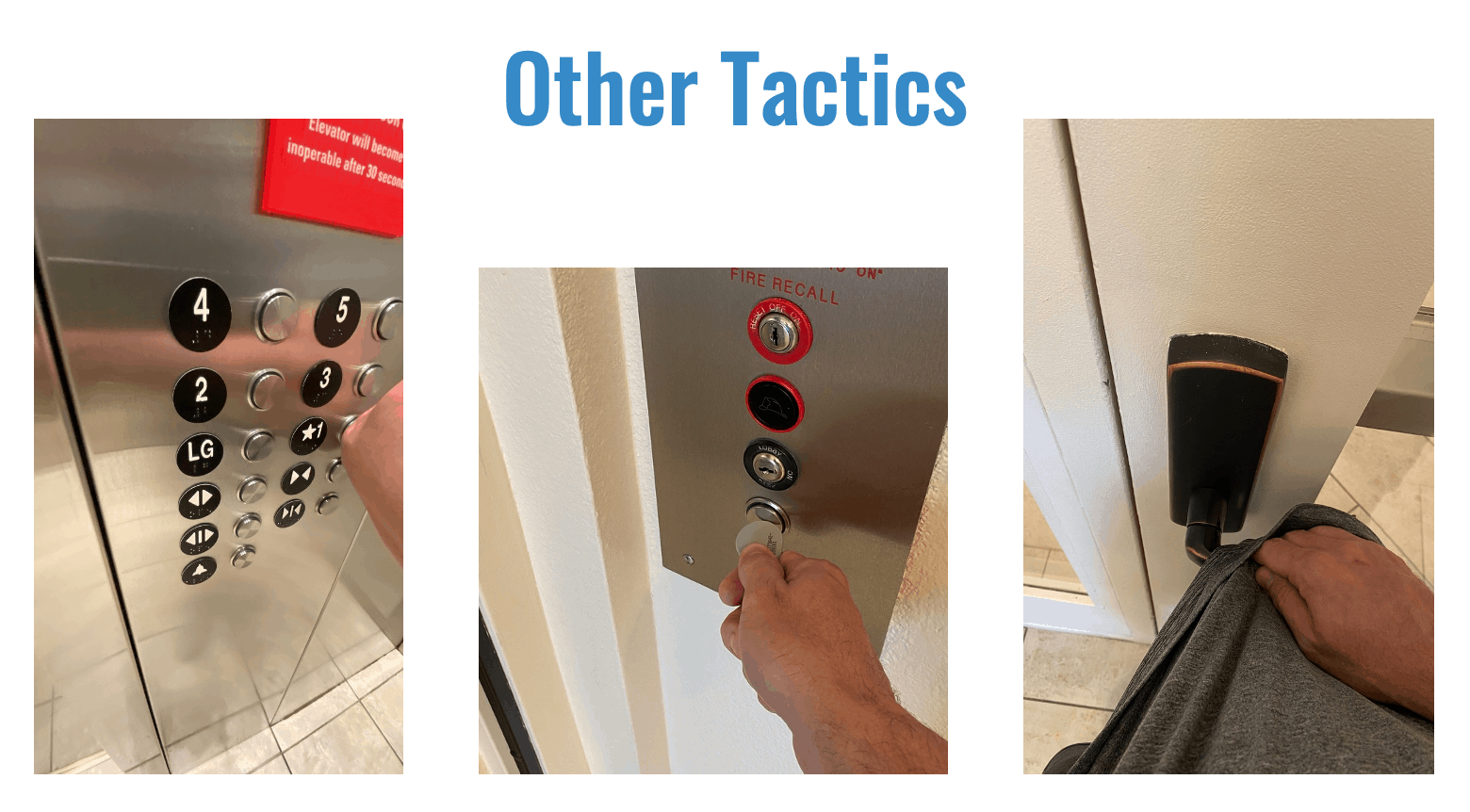
Other Elevator Ideas
It's important to be patient and not crowd elevators. Generally, when I see an elevator open with somebody already in it, I'll politely decline and wait for the next empty one.
Some buildings are encouraging or requiring distancing and/or limits on the number of people per elevator.
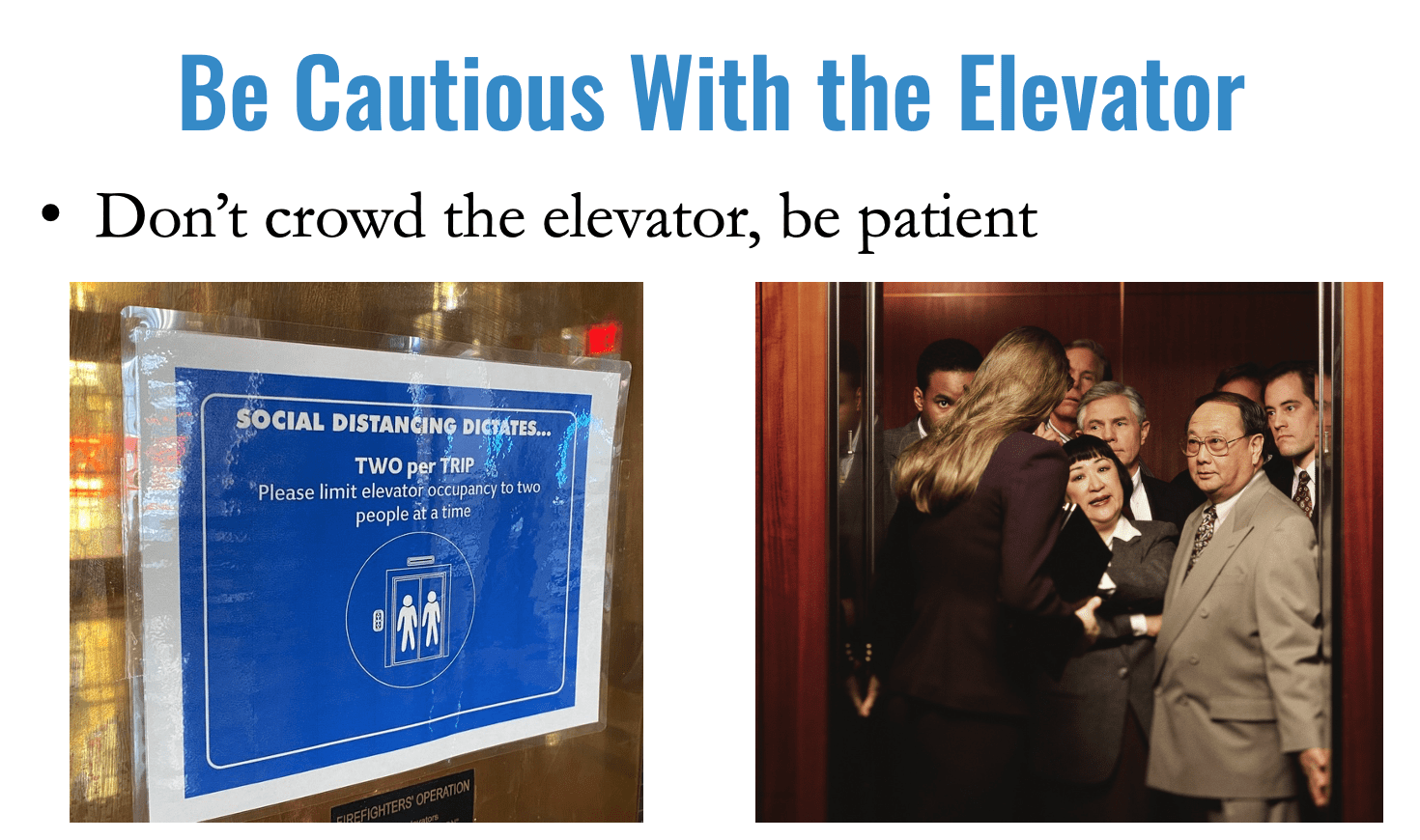
The last thing you want to do is to rush on or off an elevator and bump into somebody. Take it slow… take a step back and make sure the coast is clear entering and exiting.
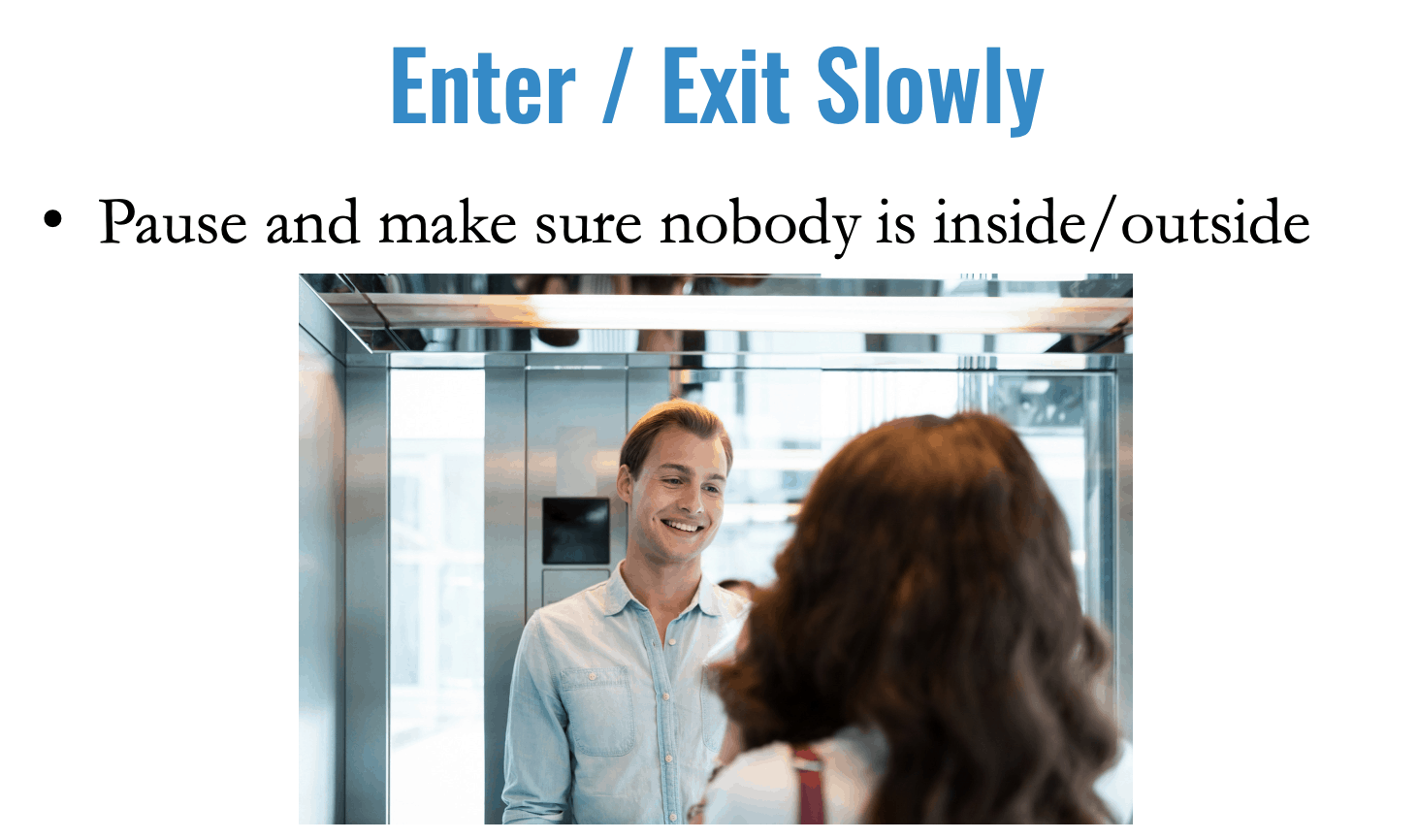
Returning Home
Whatever you did and no matter how careful you were while out, take off your mask (by touching only the straps) and then wash your hands.
What About Shoes?
Do you have to leave them in the hallway (as many in our apartment are doing)? No. But, it can't hurt.
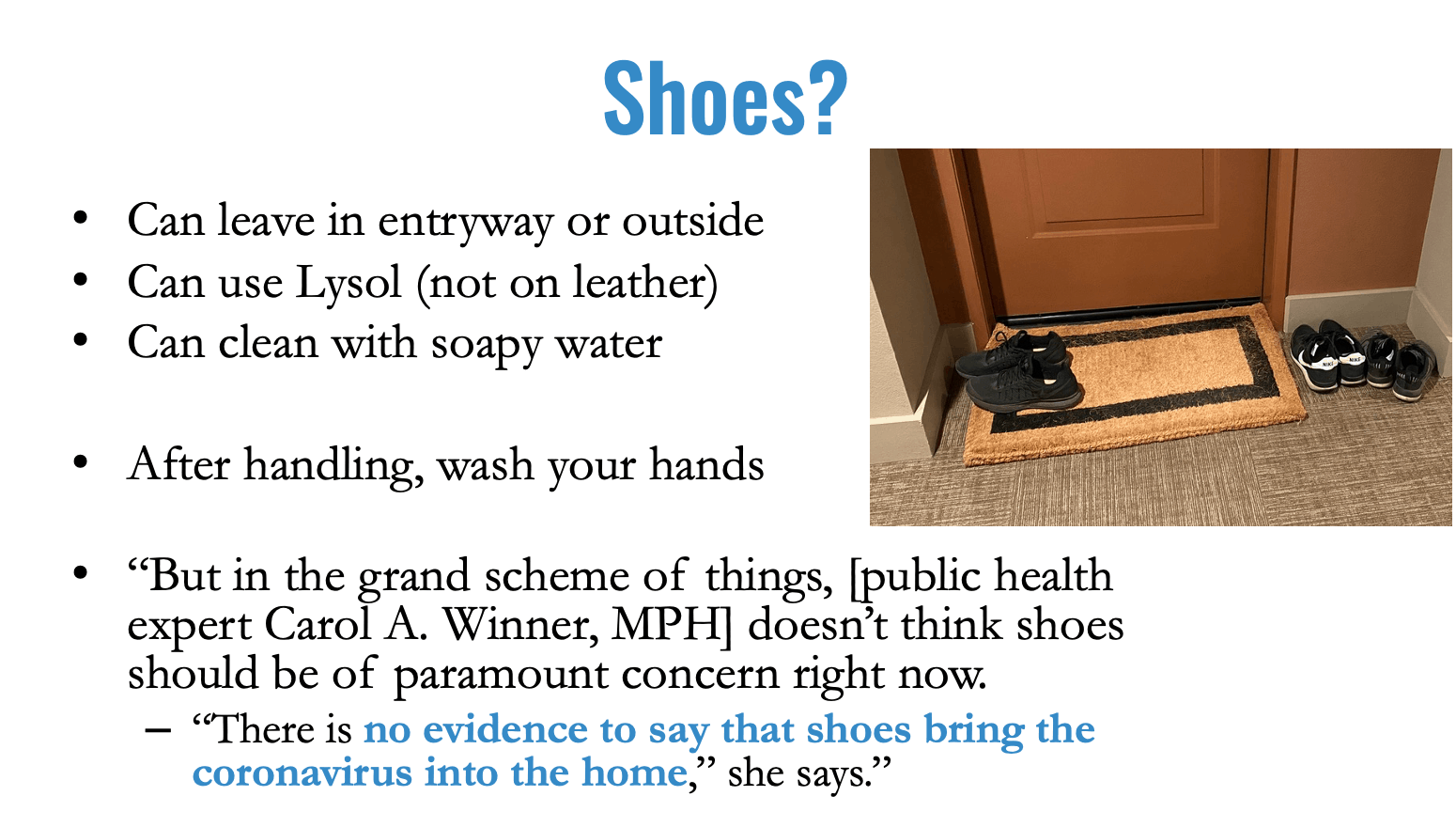
What about Mail and Packages?
“The World Health Organization also notes that it's very unlikely for a package to be contaminated after being exposed to different conditions, and therefore the risk of a person contracting the virus from a package is considered low.“
https://www.cnet.com/health/can-coronavirus-survive-on-amazon-packages-what-to-know/
From the same source…
“Should you take a Clorox wipe or Lysol spray to the box or leave it outside for several days? Do you need to wear a face mask or gloves when opening your mail?
Right now, the answer is no to all of that…”
If you want to be really cautious, some recommend waiting 24 hours to handle boxes or packages (the estimated time that the virus can live on those surfaces — although a plastic Amazon bag might be different).
Either way, you should be washing your hands, so waiting might not be necessary.
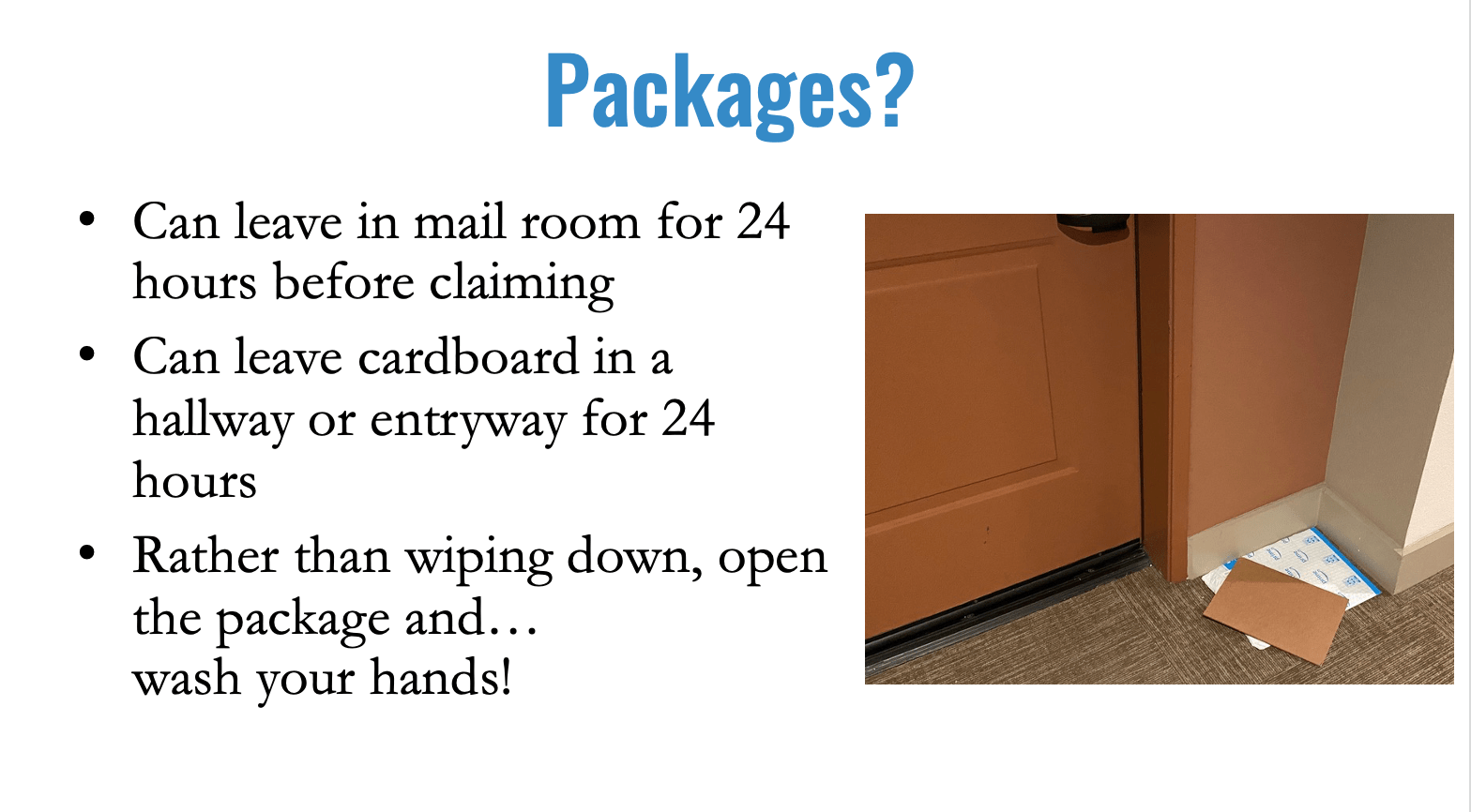
What About Food Deliveries?
Experts consider them to be safe:
“However, the current knowledge is that it's safe to order takeout and groceries. According to the Food and Drug Administration, there's no evidence of the virus being transmitted through food or packaging.“
“No evidence” doesn't mean “not possible” or “has never happened,” so you might want to take some precautions. Again, they can't hurt.
Our condo board decided that food delivery people could no longer come up to a resident's unit. Owners or residents have to come to the lobby. There was a designated drop off spot for contactless delivery (and the front desk staff disinfected that counter often).
- Remove food from packaging onto your own plates
- Wash your hands after handling, before eating
- There's nothing wrong with “contactless” delivery
In Conclusion
During these times, everybody is stressed and anxious.
It's arguably a time for more patience, kindness, graciousness, and thankfulness — toward your neighbors and those who work in your building.
It's a time to be safe and to live well…
What thoughts, tips, or practices do you have to share? Leave a comment…
Please scroll down (or click) to post a comment. Connect with me on LinkedIn.
Let’s work together to build a culture of continuous improvement and psychological safety. If you're a leader looking to create lasting change—not just projects—I help organizations:
- Engage people at all levels in sustainable improvement
- Shift from fear of mistakes to learning from them
- Apply Lean thinking in practical, people-centered ways
Interested in coaching or a keynote talk? Let’s start a conversation.




